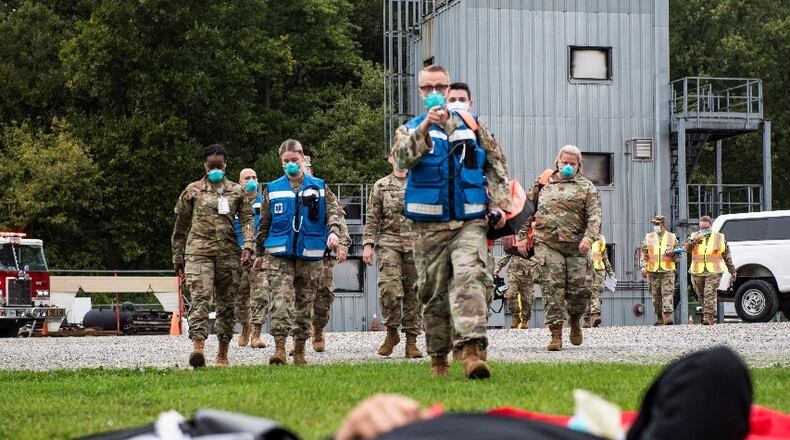The 788th Civil Engineer Squadron Fire Department was the first to arrive to the “crash site,” where it was met with the challenge of eliminating a fire that engulfed the simulated C-17 fuselage.
As firefighters worked on containing the flames, 88th Medical Group personnel arrived on scene and began to triage “victims” played by volunteers and prepare them for transport to medical facilities.
The 88th Security Forces Squadron set up a 5,000 foot cordon and remained on scene to prevent unauthorized access to the incident.
“These exercises are vital,” said Garth Freund, 88th Air Base Wing exercise planner. “They exist to keep people sharp in their responsibilities should anything of this nature happen for real. You have only seconds to respond to a situation like this, and if you don’t, it could mean the difference between saving a life and losing one.”
Despite the eagerness of first responders to “practice how you play,” Freund said the exercise is a training opportunity and things will not run the same as an actual incident.
“You want people to respond fast and get right into it, but a lot of people have not had this specific training of what they need to do when they get out here,” he said. “So this is a perfect chance for people to learn their roles and be better prepared if they need to act in a real-world situation.”
A key aspect of the exercise was having volunteers play plane-crash victims, each one having a different injury that required triage decisions by the medical team.
“We all wanted to come out here to help make this as real as possible,” said Staff Sgt. Jeremy Smotherman, 88th Communications Squadron. “A lot of volunteer opportunities open up all around base, and whenever you can help out your teammates, I feel it is important to do so.”
Smotherman also said the first responders were “incredibly efficient” and he got a glimpse of just how many moving parts are involved in a training event like this.
Base exercise planners encourage others to participate in future exercises and volunteer opportunities as it provides the realistic aid that helps the first responder team’s training.
About the Author



